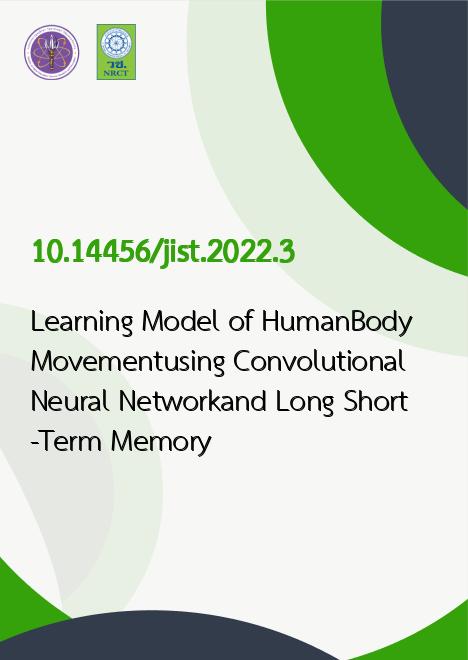
|
Learning Model of HumanBody Movementusing Convolutional Neural Networkand Long Short-Term Memory |
|---|---|
| รหัสดีโอไอ | |
| Creator | Nutchanun Chinpanthana |
| Title | Learning Model of HumanBody Movementusing Convolutional Neural Networkand Long Short-Term Memory |
| Publisher | The Association of Council of IT Deans (CITT) |
| Publication Year | 2565 |
| Journal Title | Journal of Information Science and Technology |
| Journal Vol. | 12 |
| Journal No. | 1 |
| Page no. | 27-36 |
| Keyword | Image classification, Human recognition, Convolutional Neural Network, Human activityrecognition |
| URL Website | https://tci-thaijo.org/index.php/JIST |
| Website title | Journal of Information Science and Technology |
| ISSN | 2651-1053 |
| Abstract | The recognition and understanding of human activities remain active research in computer vision and it is widely used in computer interaction, human monitoring system, human behavior analysis, and other fields. The problem is challenging due to its various interactions between persons and motion dynamics between human and objects. There are many algorithms to recognize human activity based on deep neural network models was proposed. The deep neural network classifier was constructed to integrate with thehuman action target, but the results was not classified as action though it should have. To overcome this problem, this paper proposes a combined model of deep learning convolutional network with long short-term memory for recognize human motion pose. The proposed model extracts the key point features in an automated way with OpenPose and categorizes with trajectories of a human body. This paper presents main three steps including (1) data pre-processing and feature extraction, (2) deep learning with convolutional neural networkand long short-term memory, and (3) efficiency measurement and evaluation of experimental results. Results we have tested our approach on activities of daily living with URFall datasets. The experimental results indicate that our framework offers performance improvements. The proposed model can achieve significant improvements for activity classification with maximum success rate of 81% and 76.9% with 256, 128 hidden nodes in data set II. |
